Drop us a short note with your inquiry by filling out the contact us form.
This "how-to-connect" documentation will explain the initial configuration of an example connection from Microsoft Planner to a SharePoint Online List in Office 365. We will be synchronizing data stored in Microsoft Planner.
This guide presupposes that you have installed the Layer2 Cloud Connector and that you are familiar with its basic functionality. The Layer2 Cloud Connector User Documentation will provide you with all necessary information.
2. Configuring the Layer2 Cloud Connector
2.2 Configuring the Data Entity Source
2.3 Configuring the Data Entity Target
Open your Microsoft Planner dashboard on your browser and select the plan that you like to sync. Make sure to copy the PlanId as we will need this Id later (see screenshot below):
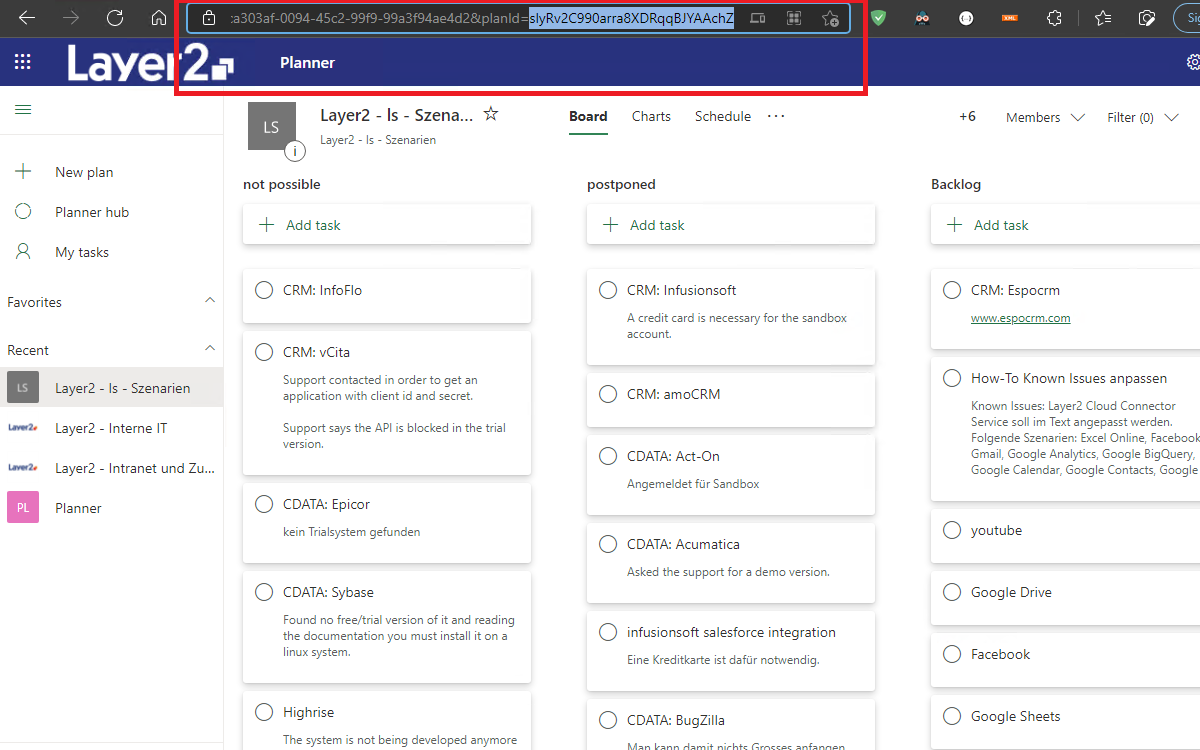
Create a new connection by using the Create New Connection option in the Actions pane (right-hand side). The new connection will appear at the bottom of the Connection Manager List (left-hand side). Click on your newly created connection to open the connection configuration settings.
Choose a meaningful name for your connection and replace the current "New Connection" Connection Title with it.
Connections to Microsoft Planner are read-only connections. We will choose Left to Right as Synchronization Direction.
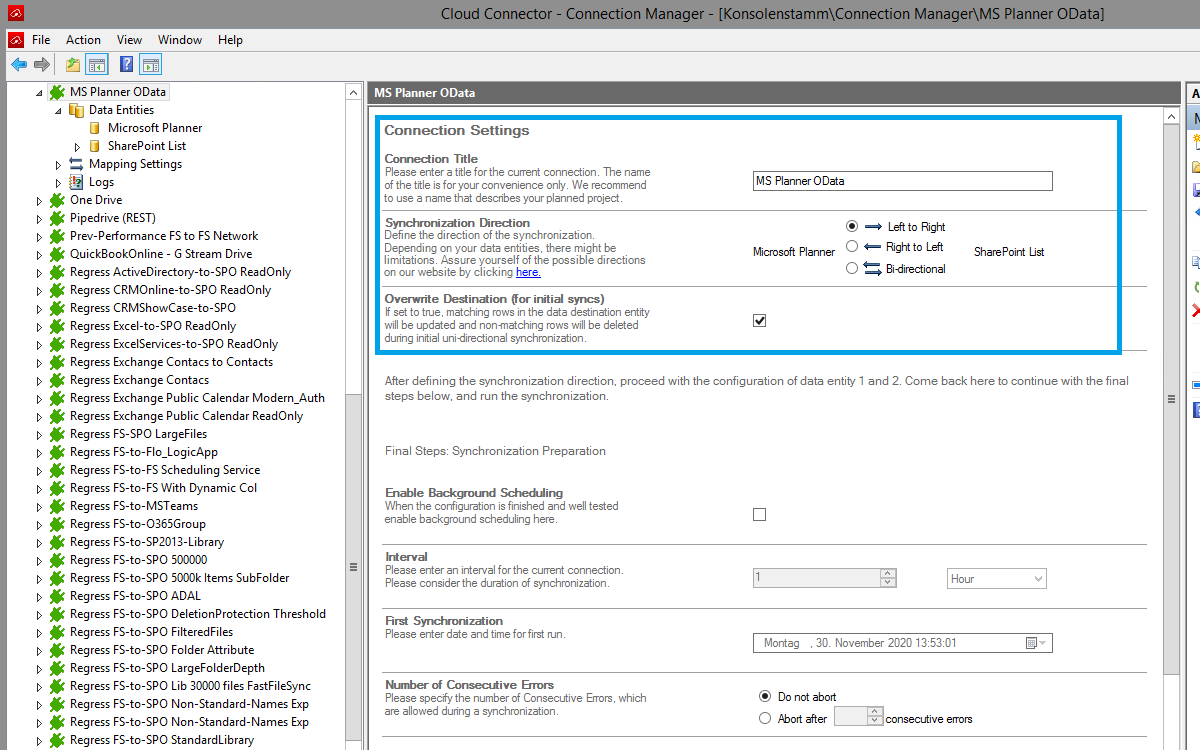
We will now set up our Data Entities. Go to the data entity “Source” to open the configuration settings.
Choose a entity title. It is recommended to give your entities meaningful names.
Select the OData (Layer2) provider from the data provider list. You can search for OData by typing into the selection box.
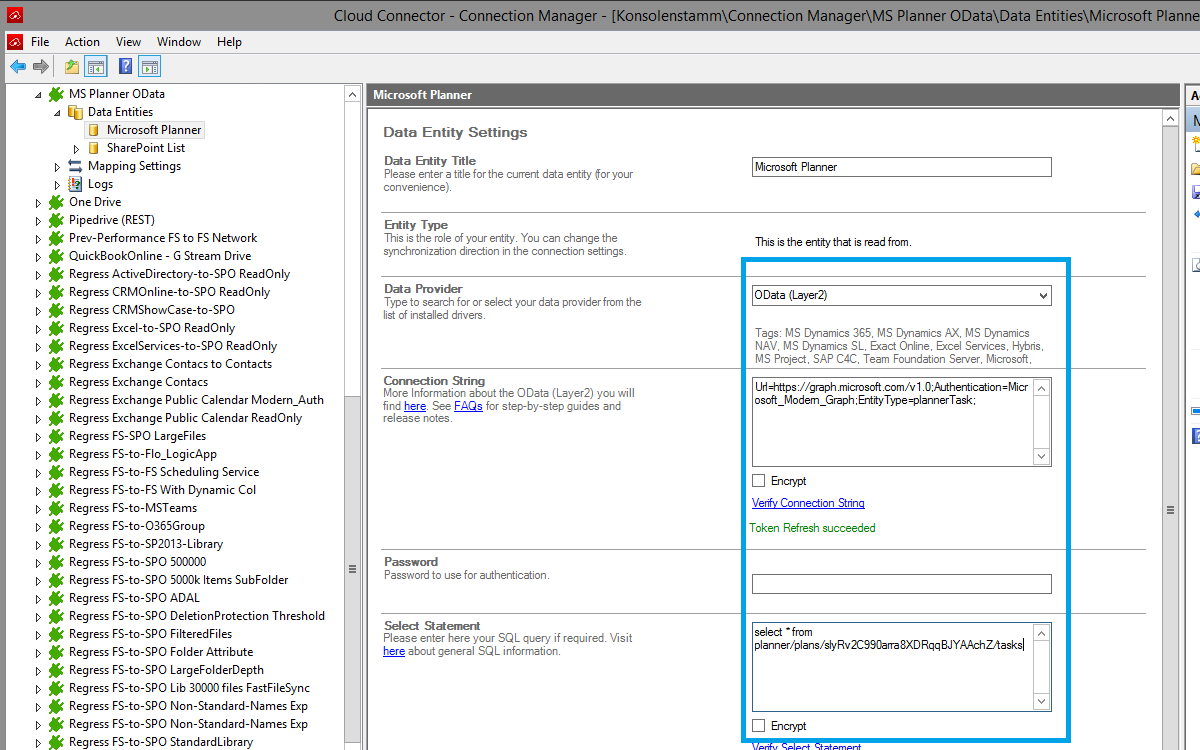
For the Connection String, we need the information mentioned in step 1. You can copy the below connection string and adjust it to match your gathered information. Use the Verify Connection String option to evaluate if the provided connection string is valid.
Url=https://graph.microsoft.com/v1.0;
Authentication=Microsoft_Modern_Graph;
EntityType=plannerTask;
Click on “Refresh Authentication Token” sign in and confirm the consent dialog, if required.
The Select Statement text box is used to define specific data queries. We will be gathering all tasks from our plan. You can copy the below select statement and adjust it to match your needs. Save your changes by using the right-hand pane option Save Changes.
select * from planner/plans/slyRv2C990arra8XDRqqBJYAAchZ/tasks
If you want to get only tasks of a specific bucket, the select statement would for example look like this, where Id is the BucketId:
select * from planner/plans/myPlanId/tasks where bucketid='id'
To check if all necessary columns are received, you can use the Preview Data option on the right-hand pane, which will provide you with a pop-up window showing your sample data from your Microsoft Planner plan.
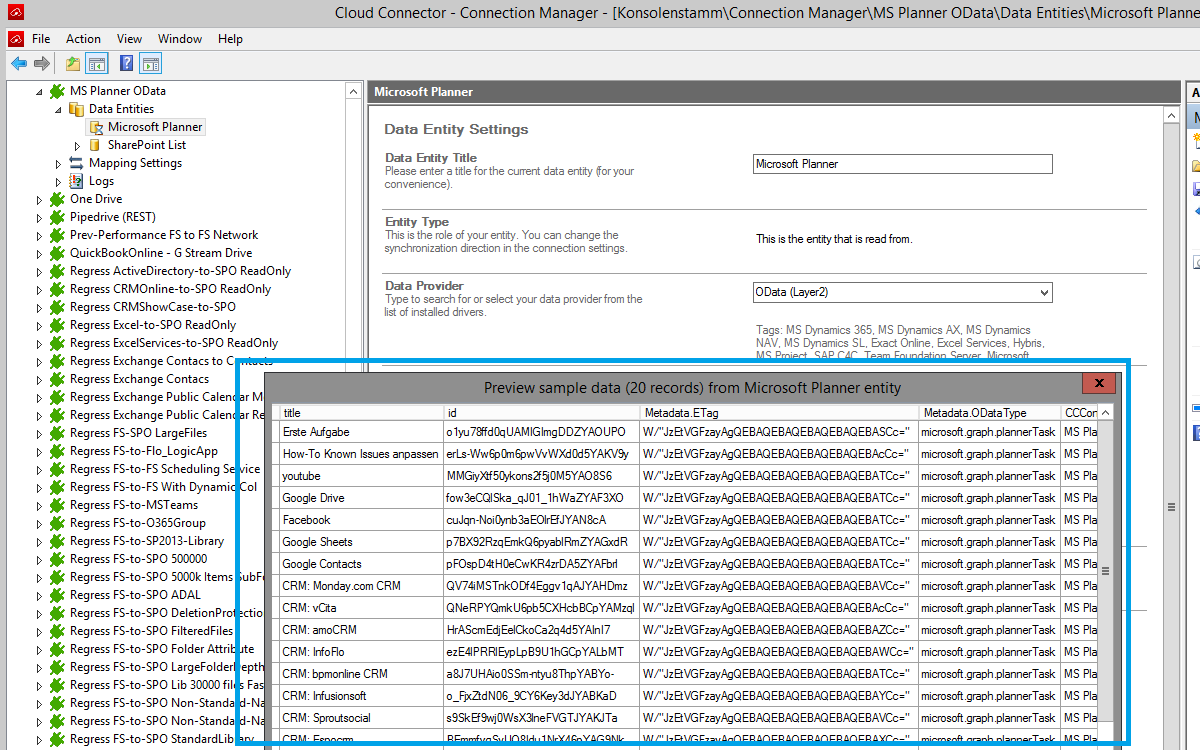
Save your changes by using the right-hand pane option Save Changes.
We are going to send the data to a custom SharePoint Online list. It's required that you set up this list prior to the next steps. Your list should contain matching columns according to your source entity.
Use the left-hand pane to switch to the data entity "Data Entity 2". We will be using the Layer2 SharePoint Provider for this setup.
For more information about the SharePoint provider visit:
You can copy the below Connection String which contains the minimum of required properties to connect to your custom SharePoint Online list.
URL=https://your_custom_sharepoint_list_url/AllItems.aspx;Authentication=Microsoft_Modern
Click on “Refresh Authentication Token” sign in and confirm the consent dialog, if required.
Save your changes by using the right-hand pane option Save Changes.
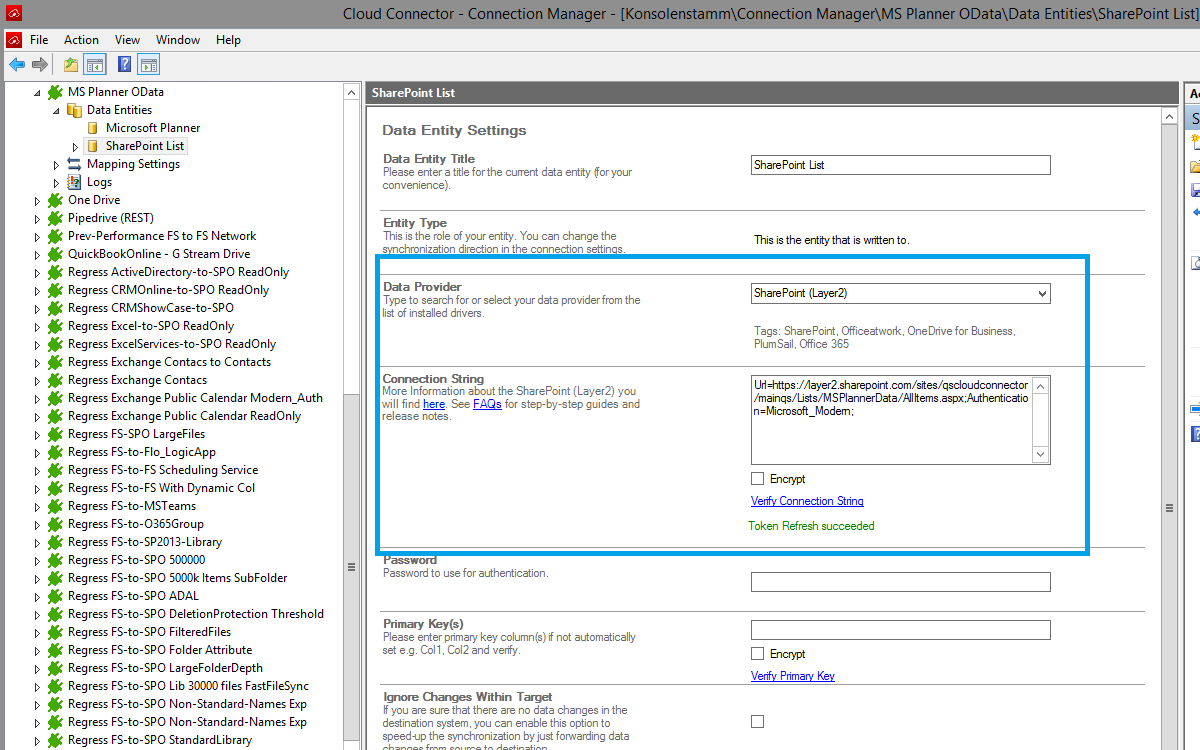
Note: The task list in this sample is not the standard SharePoint Task list, but a custom list.
In the next step, we will configure our mapping settings. Click on the Mappings option on the left-hand pane. If your fields from SharePoint are named identical to the fields from your source system, the Enable Auto Mapping option will match those columns. Disabling this option allows you to match your columns as needed. We enabled auto-mapping in our setup. Save your changes by using the right-hand pane option Save Changes.
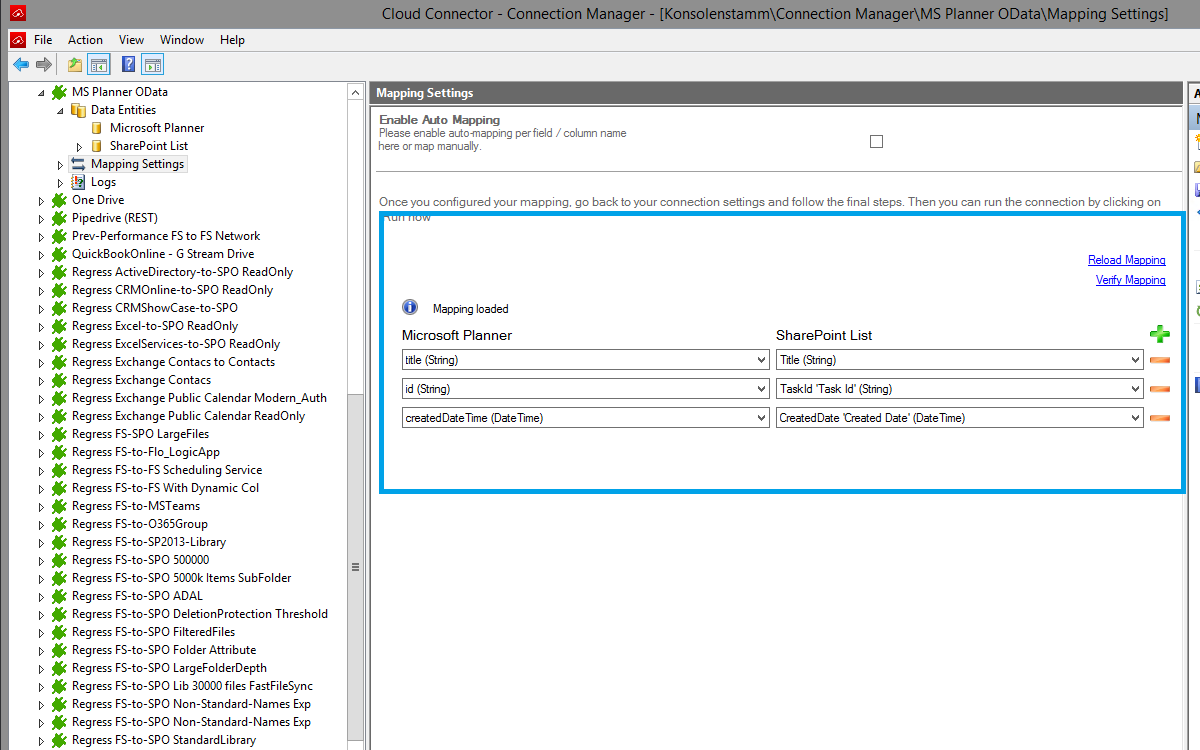
To run your connection switch back to the main connection configuration node and use the Run Now Button located on the bottom of the setup page. The Run Synchronization Toolbox will also display the synchronization process.
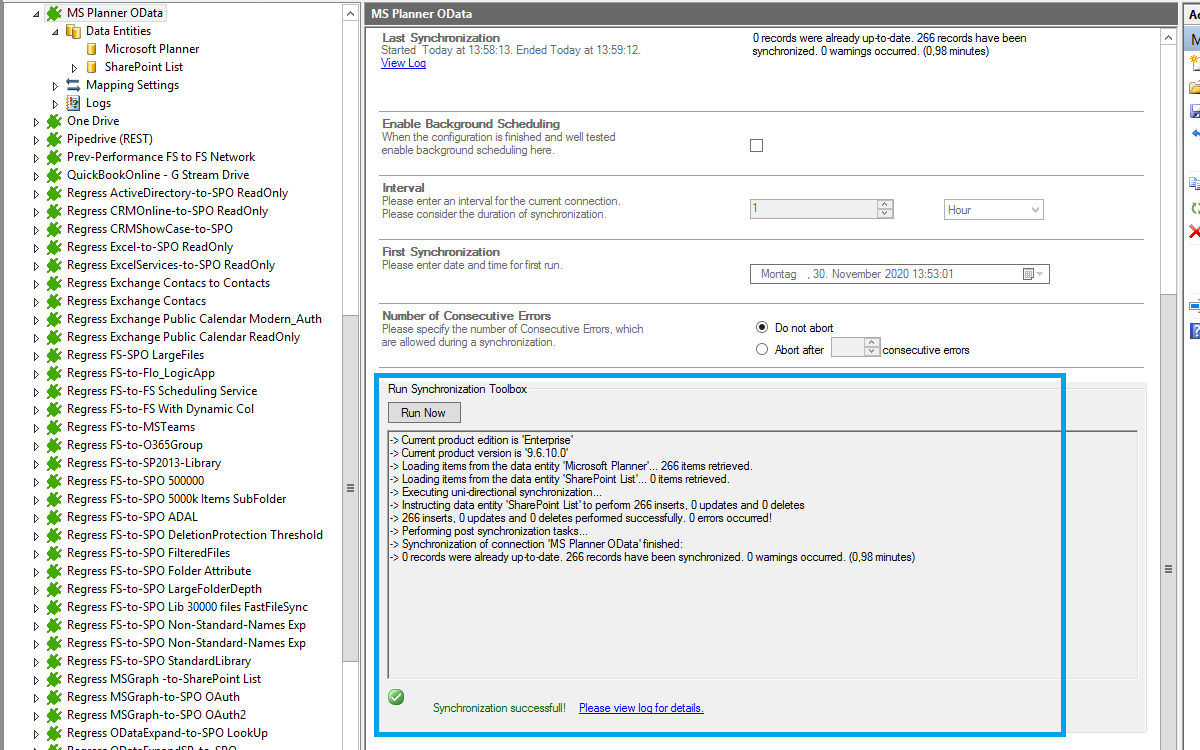
This will be the result in our SharePoint Online list after our initial successful synchronization:
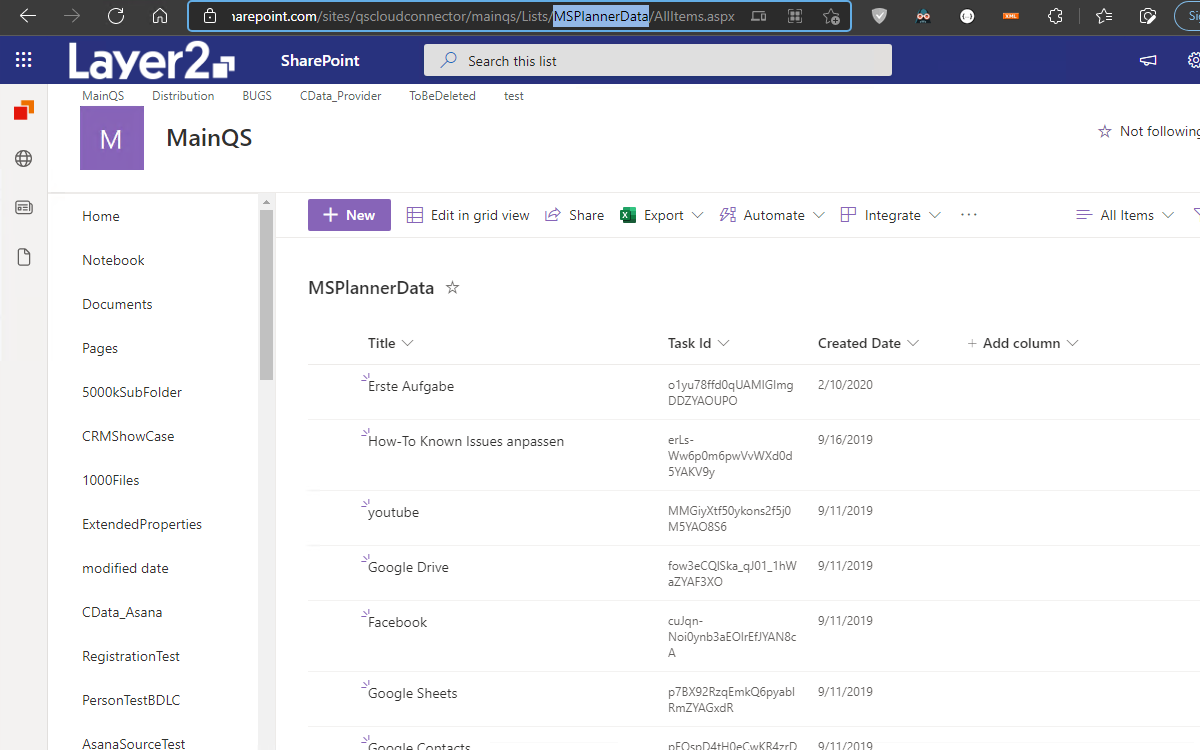
If you want to have multiple connections to Microsoft Planner, you need to specify a scope for the authentication by providing the connection string parameter "User", e.g. "User=myUser".
To get information, which types of data can be read from Microsoft Planner, please refer to the documentation: https://docs.microsoft.com/de-de/graph/api/plannerplan-get?view=graph-rest-1.0&tabs=http
For example if you want to list all buckets, please refer to the appropriate section in the documentation (“List buckets”) and check how the URL must be built. In this example, the documentation shows the following HTTP request:
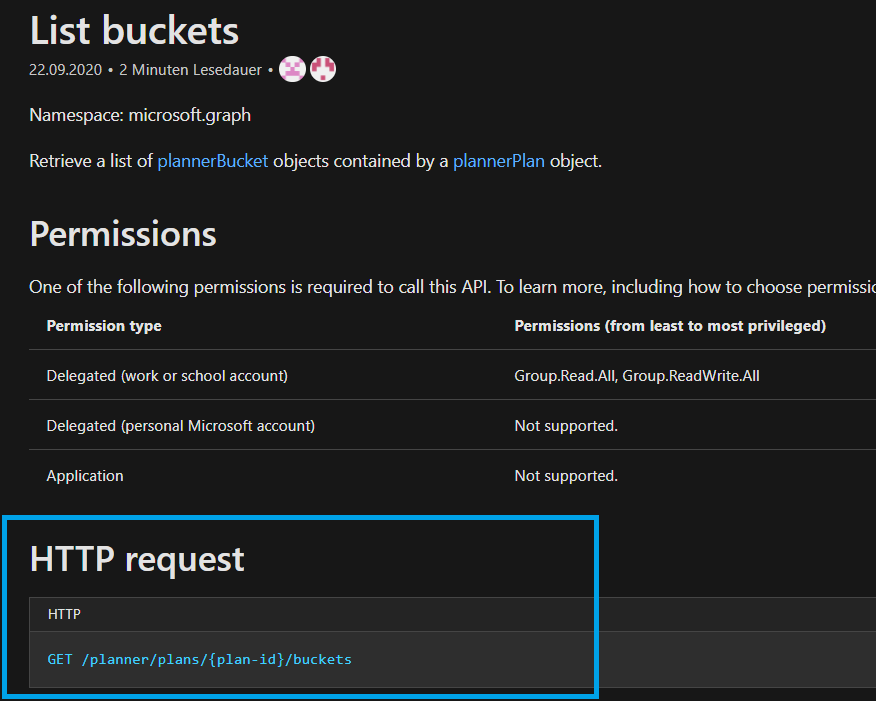
This means that the connection string and select statement must be modified as follows:
Url=https://graph.microsoft.com/v1.0; Authentication=Microsoft_Modern_Graph; EntityType=plannerBucket;
select * from planner/plans/<yourPlanId>/buckets
As far as tested, this connection supports uni-directional only.